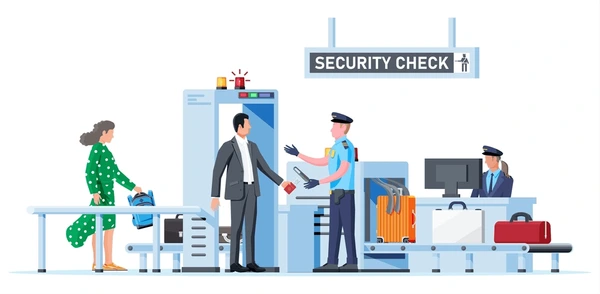The Essentials of Security Checkpoint Equipment
Security checkpoints play a critical role in maintaining safety and order in various settings, from airports to office buildings. The equipment used at these checkpoints is crucial to identifying threats and ensuring smooth operations. With evolving technology and increasing demands for efficient security, the tools and systems employed must balance effectiveness, user-friendliness, and reliability. This article outlines the key pieces of equipment that every modern security checkpoint should have, highlighting their purpose and importance.
Metal Detectors: The First Line of Defense
Metal detectors are a staple of any checkpoint security. Walk-through detectors allow for the rapid screening of individuals, identifying hidden metal objects such as weapons or contraband. Handheld metal detectors, on the other hand, are used for more targeted inspections, offering flexibility in cases where further examination is required. These devices are highly effective, easy to operate, and non-invasive, making them essential for environments that handle large volumes of people, like airports and stadiums. With advancements in sensitivity and detection accuracy, modern metal detectors contribute significantly to both safety and efficiency.
X-Ray Scanners for Baggage and Belongings
X-ray scanners are vital for inspecting items that pass through checkpoints, such as bags, luggage, and packages. These machines use advanced imaging technology to provide detailed visuals of an item’s contents, helping operators identify prohibited or dangerous items quickly. Modern scanners feature color-coded imaging to differentiate between organic, inorganic, and metallic materials, simplifying the inspection process. Additionally, many of these systems now incorporate artificial intelligence to enhance threat detection and reduce human error. By providing a non-intrusive method for screening belongings, X-ray scanners help maintain a balance between security and convenience.
Explosives and Trace Detection Systems
For environments with heightened security requirements, explosives and trace detection systems are indispensable. These devices detect minute traces of explosive substances on surfaces, clothing, or luggage, offering an additional layer of protection. Typically, swabs or air sampling techniques are used to collect potential residue for analysis. The sensitivity and speed of these systems allow security personnel to respond swiftly to any potential threats. As the technology continues to improve, these devices are becoming smaller, faster, and more accurate, ensuring they remain a key component in high-security checkpoints.
Biometric Systems for Identity Verification
Biometric systems are increasingly being integrated into security checkpoints to verify identities and enhance access control. Using features like fingerprint recognition, facial scans, or iris detection, these systems offer a highly secure way to confirm the identity of individuals. They are particularly effective in environments where restricted access or accurate record-keeping is necessary, such as government facilities or international airports. Beyond security, biometric systems also streamline the checkpoint process, reducing wait times and enhancing user experience. With ongoing advancements in this field, these systems are becoming faster, more affordable, and easier to implement.
Supportive Tools and Technologies
In addition to the primary screening equipment, several supportive tools enhance checkpoint operations. Security cameras with high-resolution and night vision capabilities provide continuous monitoring, deterring suspicious activity and recording events for future reference. Two-way radios and intercom systems enable efficient communication among security staff, ensuring swift responses to incidents. Lastly, signage and queue management tools, such as barriers and digital displays, help maintain order and guide individuals through the checkpoint efficiently. These supportive technologies, while often overlooked, play a vital role in ensuring the overall success of a security checkpoint.
Emerging Technologies and the Future of Security Checkpoints
As technology continues to advance, the future of security checkpoints looks increasingly promising. Emerging tools such as AI-powered threat detection systems, millimeter-wave body scanners, and automated screening lanes are revolutionizing how security is managed. These innovations aim to enhance precision, reduce false alarms, and accelerate the screening process, ensuring checkpoints can handle high volumes of people efficiently. Moreover, the integration of machine learning allows security systems to adapt to evolving threats by continuously updating their algorithms. By embracing these advancements, security checkpoints can remain one step ahead, providing an even safer and more seamless experience for all.
Equipping for Safety and Efficiency
The equipment at a security checkpoint forms the backbone of its effectiveness. From metal detectors and X-ray scanners to advanced biometric systems, each piece of technology serves a specific purpose in ensuring safety and order. As threats evolve, so too must the tools and systems used to combat them, with a focus on integrating efficiency, reliability, and user-friendliness. By investing in the right equipment and continuously upgrading to meet new challenges, organizations can create secure environments that protect both people and assets. Ultimately, a well-equipped security checkpoint not only prevents potential threats but also fosters a sense of trust and confidence among its users.
Keep an eye for more news & updates on Next Forbes!






